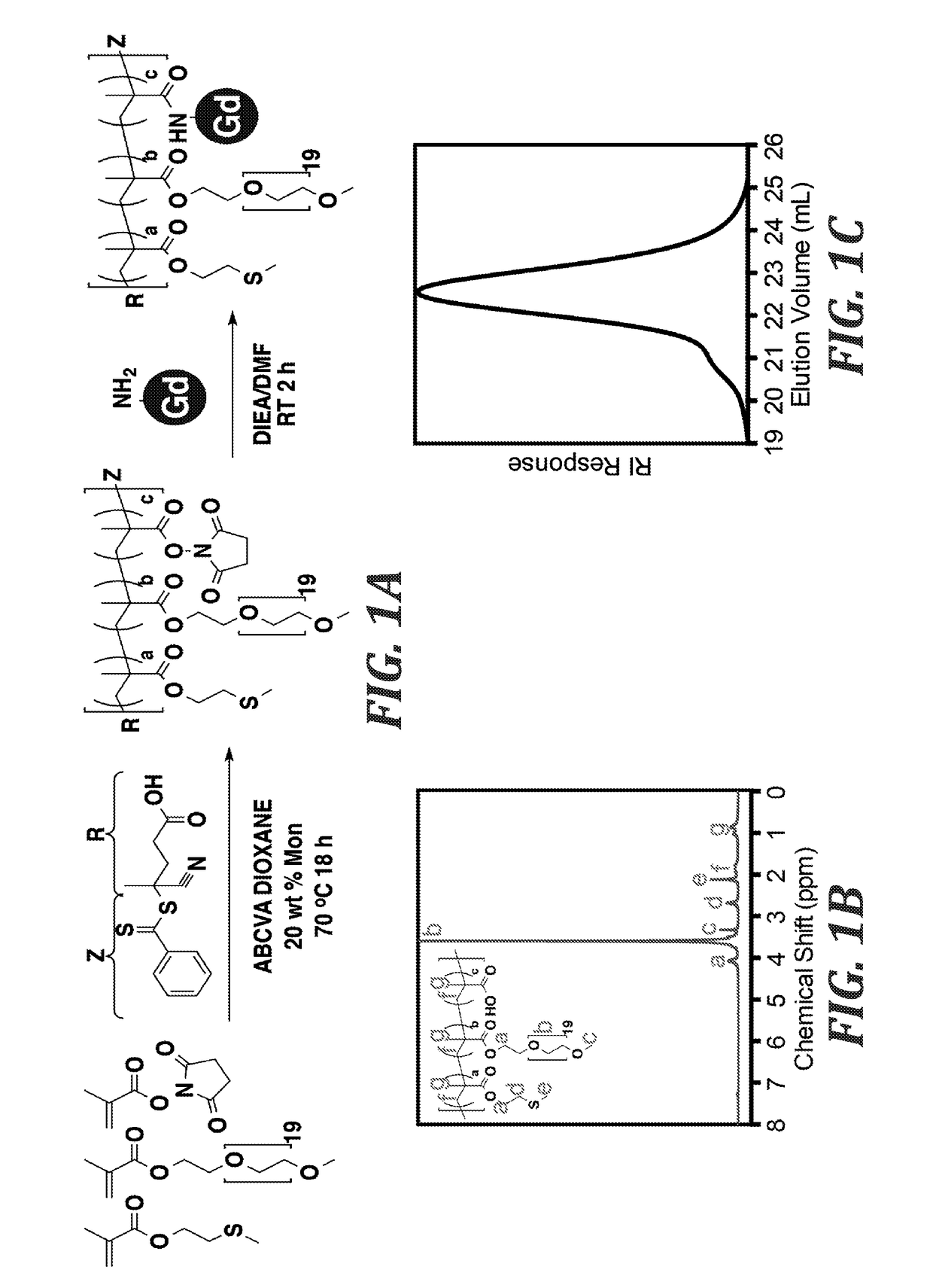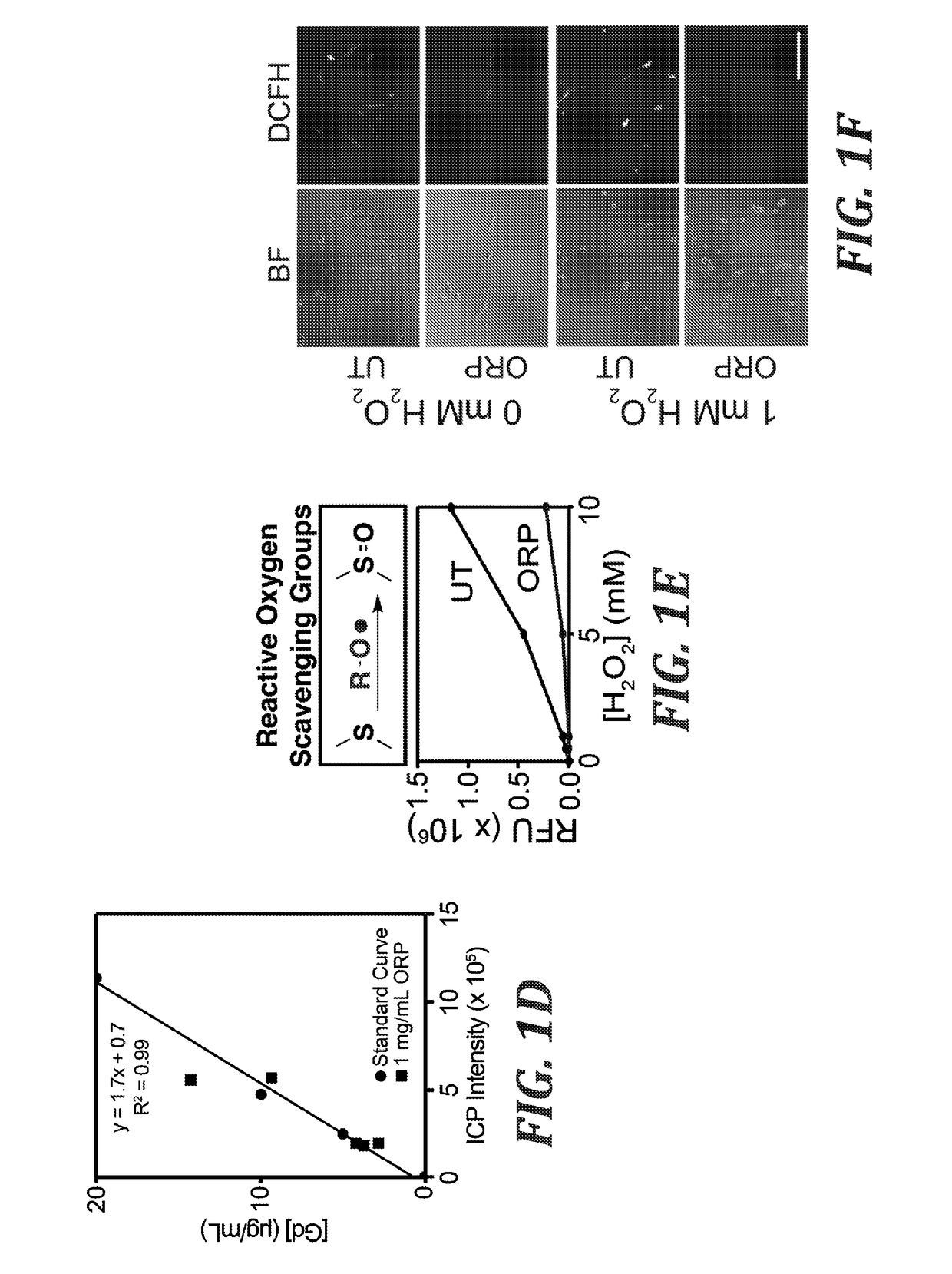Oxygen reactive polymers for treatment of traumatic brain injury
a technology of traumatic brain injury and reactive polymers, which is applied in the direction of capsule delivery, drug compositions, microcapsules, etc., can solve the problems of oxygen species (ros)-mediated neurodegeneration, unmet needs for developing strategies, and long-term damage, so as to reduce the reactive astrocyte surrounding, reduce the astrogliosis, and reduce the effect of reactive astrocytes
- Summary
- Abstract
- Description
- Claims
- Application Information
AI Technical Summary
Benefits of technology
Problems solved by technology
Method used
Image
Examples
example
Materials and Methods
[0176]Gadolinium (III) 1,4,7,10-tetraazacyclododecane-1,4,7-tris(acetic acid)-10-(4-aminobutyl)acetamide Gd-DO3A-Butylamine (X-287) was purchased from Macrocyclics. All chemicals were purchased from Sigma unless otherwise specified. All cell culture reagents were purchased from Life Technologies unless otherwise specified. Antibodies were purchased from Wako (Richmond, Va., USA).
The Preparation, Characteristics, and Properties of a Representative ORP
[0177]In this example, the preparation, characterization, and properties of a representative ORP is described.
Synthesis of poly(MEMcoO950coMNHS)
[0178]The RAFT copolymerization of 2-(methylthio)ethyl methacrylate (MEM), polyethyleneglycol monomethylether methacrylate (FW˜950 Da) (O950), and methacrylic acid N-hydroxysuccinimide ester (MNHS) was conducted at an initial monomer feed of 70%, 25%, and 5% respectively with 4-cyano-4-(phenylcarbonothioylthio)pentanoic acid (CTP) and 4,4′-azobis(4-cyanovaleric acid) (ABCVA) ...
PUM
| Property | Measurement | Unit |
|---|---|---|
| hydrodynamic diameter | aaaaa | aaaaa |
| molar mass dispersity | aaaaa | aaaaa |
| molecular weights | aaaaa | aaaaa |
Abstract
Description
Claims
Application Information
 Login to View More
Login to View More - R&D
- Intellectual Property
- Life Sciences
- Materials
- Tech Scout
- Unparalleled Data Quality
- Higher Quality Content
- 60% Fewer Hallucinations
Browse by: Latest US Patents, China's latest patents, Technical Efficacy Thesaurus, Application Domain, Technology Topic, Popular Technical Reports.
© 2025 PatSnap. All rights reserved.Legal|Privacy policy|Modern Slavery Act Transparency Statement|Sitemap|About US| Contact US: help@patsnap.com



